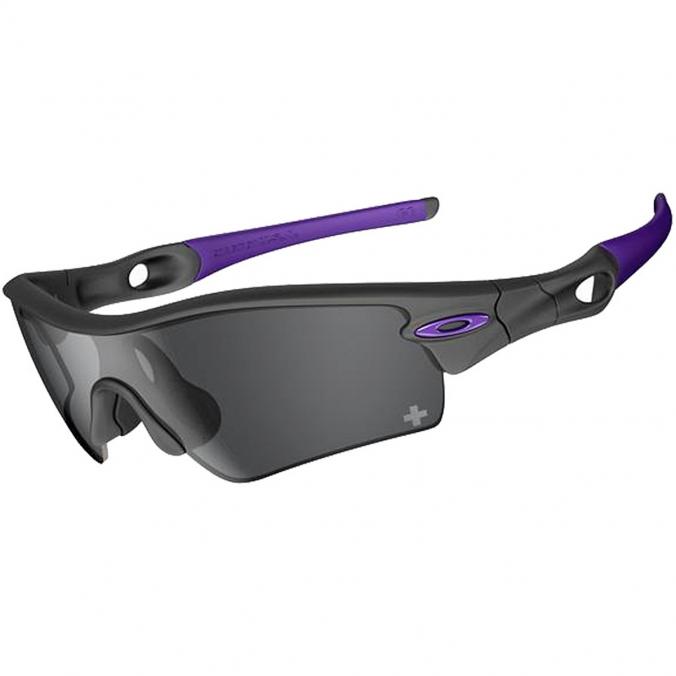Oakley pioneered single-lens sports eyewear way back when in 1983, but they haven't released a markedly new cycling-focused design since 1990. Yes, the M-Frames were futuristic back then, but the style has been kind of ho-hum for years. It's still iconic, but is now conservative, when Oakley made its name being cutting-edge. Like the M-Frame, the Radar a single-lens sunglass that is light, fits well, and has interchangeable lenses with great optics. But it does the old M's one up by employing a new hydrophobic coating on the lens. This coating makes it easier to see what's up the road when water hits the lens, as it just beads up and rolls off; the coating also makes it easier for dirt to come off, and harder for smudges to be seen because it's also oleophobic. The coating is transparent and permanent. Another improvement over the old M is the nosepiece system. It's better in two ways. In terms of fit, Radars come with two nosepieces. One will fit better than the other; the come in different widths. This means it will sit properly on the schnoz, and neither pinch it nor sit so loose as to slide down. The second, more functional, improvement is that the nosepiece attaches to the rest of the frame. Oakley found that to meet military safety standards, the venerated M needed some decidedly garage tinkering. The new nosepiece attachment improves impact protection; it meets ANSI Z87. 1 standard for both high mass and high-velocity impact resistance. And then there are the surge ports. These are the holes molded into the arms. The ports direct air inside the arms so heat and sweat don't build up behind the sunglasses and arms. And unlike certain models of the M-Frame, the arms of the Radar fold. The lens is large in a modern, high-fashion way without being too big. We prefer the Path lens because we believe it is large enough to protect the eyes while being small enough so it doesn't overheat the head and seal the eyes off from the world. Overly big glasses fog u.
-
- Categories
- Architecture
- Art
- Cars & Motorcycles
- Design
- DIY & Crafts
- Education
- Film, Music & Books
- Fitness
- Food & Drink
- Gardening
- Geek
- Hair & Beauty
- History
- Holidays & Events
- Home Decor
- Humor
- Kids
- Women's Fashion
- Men's Fashion
- Leisure & Outdoors
- People
- Photography
- Products
- Science & Nature
- Sports
- Technology
- Travel & Places
- Weddings
- Other
- Property
- Animal
- Celebrities
- Health & Fitness
- Illustrations & Posters
- Quotes
- Services
- Renovation
- Home Building
- Business
- Toys
- New
- Popular
- Gifts
- Videos
- Help / Contact Us
- Terms & Privacy
- What is InterestPin


